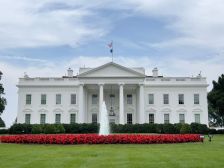Federal agencies continue to face challenges in consolidating data centers, GAO says

Only 13 of 24 participating federal agencies met or planned to meet the Office of Management and Budget’s goals for closing data centers to save money by the end of fiscal 2018, according to a recent report.
The Government Accountability Office found that with reported and future closures, 4,716 federal data centers will continue to operate. That number, in general, puts the 24 CFO Act agencies collectively behind on OMB’s Data Center Optimization Initiative, launched in 2016 with the goal of reducing outdated or duplicative facilities.
“Until agencies consolidate the data centers required to meet their targets, as well as identify and report the associated cost savings, they will be challenged to realize expected efficiencies and the full benefits of DCOI will not be fully realized,” reads the report, released April 11.
Since the passage of the Federal Information Technology Acquisition Reform Act in 2014, GAO has reviewed agencies’ data center inventories. In March 2018, GAO found 74 of 81 prior recommendations to agencies for consolidating and optimizing their data centers had gone unaddressed, compared to 47 in December.
OMB defines a data center as any facility used to process or store data, and about 6,250 centers closed between 2010 and September 2018 in order to, among other things, reduce the amount of time data servers sit idle. Another 1,200 centers are slated for closure through 2023, according to the GAO.
As of August 2018, agencies identified 12,166 data centers once or currently under their operation, a 9,000-center increase since October 2011 — largely due to the broadening of the definition.
DOT, Defense, Interior: We need revised targets
Of the 11 agencies with no plans to meet some or all closure goals, some are seeking revised targets from OMB. CIOs at the departments of the Interior and Defense, as well as the Department of Transportation’s director for IT compliance, cited mission-critical data centers like those in airport control towers, in the case of DOT.
GAO estimates the total savings from data center closures at $2.36 billion between fiscal 2016 and fiscal 2018, but five agencies collectively missed their cost savings goals by $380 million. Those agencies were the DOD, DOI, Department of Veterans Affairs, Office of Personnel Management, and Social Security Administration.
Another three agencies never even set a cost savings target: the Department of Housing and Urban Development, the Environmental Protection Agency and the National Science Foundation.
All 24 agencies made limited progress improving server utilization and automated monitoring, energy metering, power usage effectiveness, facility utilization and virtualization, according to the report. Only three agencies met three targets, nine met one, and 10 met none, with two agencies not owning any data centers to report progress.
The most agencies, eight, reported meeting OMB’s target for reduced energy use by IT equipment, followed by six agencies increasing their ratio of systems in operation to physical servers.
“The continuing shortcomings in data center optimization can also be attributed, in part, to agencies viewing OMB’s optimization metric targets as unrealistic,” reads the report.
DOT said lack of sufficient funds and competing priorities hindered implementation, according to the agency’s DCOI strategic plan.
GAO found the six agencies that “demonstrated success” in optimizing data centers had executive leadership buy-in for consolidation, developed an organizational communications plan, and focused on closures. Those agencies were the Department of Agriculture, Department of Commerce, Department of Justice, EPA, General Services Administration, and SSA.
Only the Department of Health and Human Services disagreed with all of GAO’s recommendations that it meet data closure and data center optimization targets, calling them
“expired requirements.” HHS hit its tiered data center closure goal but had no plan to meet the goal for non-tiered data centers or four of the optimization goals because OMB is in the process of setting new targets for the agency.






